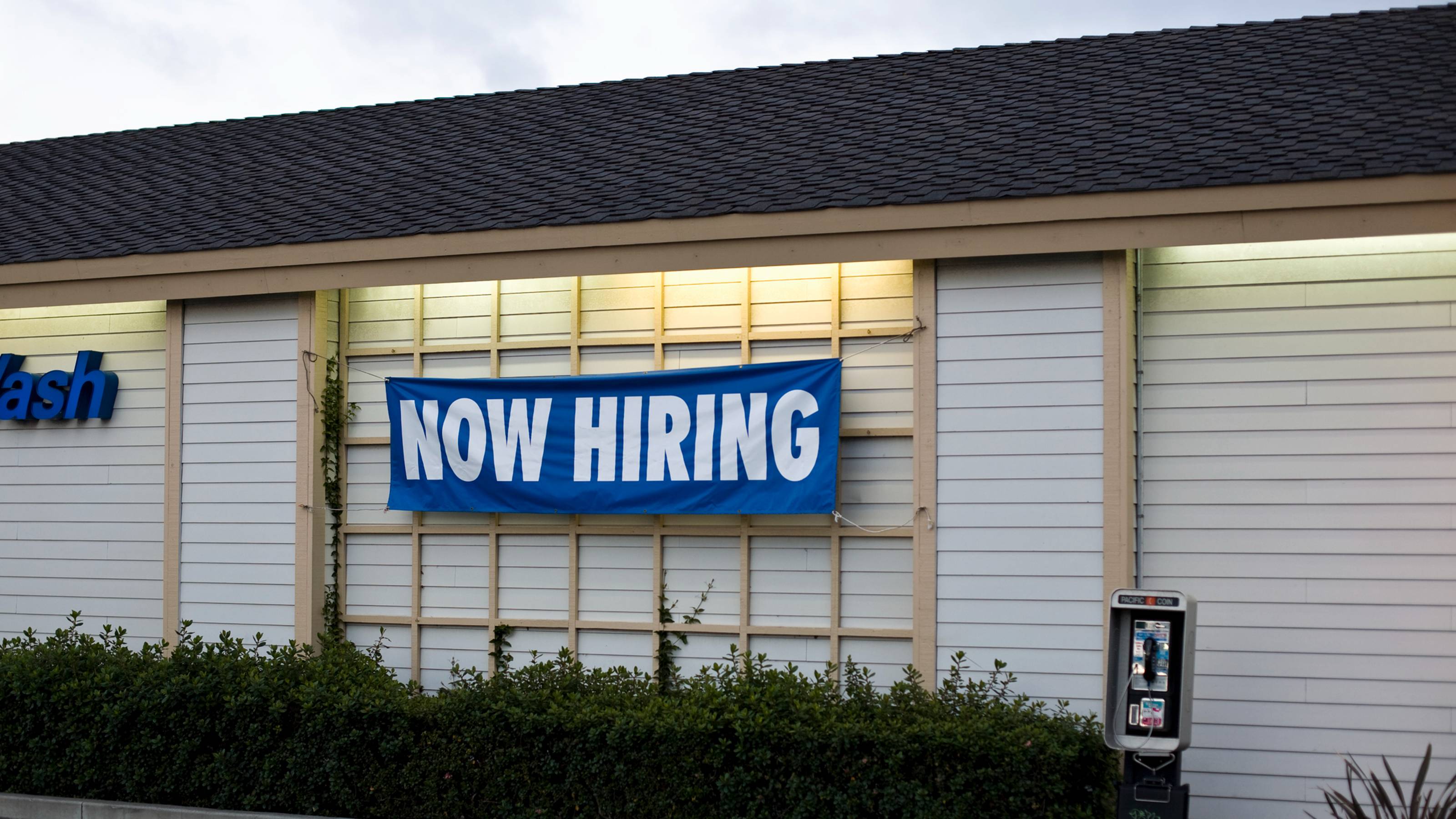Jobs Growth Beats Expectations in November: What the Experts Are Saying
The jobs report keeps the economy on track for a soft landing, but rate cut hopes may be premature.


A better-than-expected November jobs report appears to keep the economy on path for a so-called soft landing, experts say, but also lowers the odds that the central bank will start cutting rates in the first quarter of 2024.
U.S. nonfarm payrolls expanded by 199,000 last month, the Bureau of Labor Statistics said Friday, vs expectations for 185,000 new jobs. Government and healthcare were the two largest sources of new jobs in November, while the end of the auto workers and Hollywood actors and writers strikes also boosted the payrolls report.
The unemployment rate, which is derived from a separate survey, fell to 3.7% from 3.9%. Economists expected the unemployment rate to remain unchanged.

Sign up for Kiplinger’s Free E-Newsletters
Profit and prosper with the best of expert advice on investing, taxes, retirement, personal finance and more - straight to your e-mail.
Profit and prosper with the best of expert advice - straight to your e-mail.
The stronger than expected reading is expected to keep the central bank on track to leave interest rates unchanged at a 22-year high at the next Fed meeting. However, experts say the market has probably gotten ahead of itself if it expects the Fed to start cutting rates as early as the first quarter.
Interest rate traders currently assign a 45% probability to a quarter-point rate cut at the Fed's March meeting, down from 55% a day ago, according to CME Group's FedWatch Tool.
With the November jobs report now a matter of record, we turned to economists, strategists and other experts for their thoughts on what the data means for markets, macroeconomics and monetary policy going forward. Please see a selection of their commentary, sometimes edited for brevity or clarity, below.
Jobs report: the experts weigh in

"This was a much better than expected payroll report, more so because it puts to bed fears about a deteriorating labor market amid a rising unemployment rate over the last several months." – Sonu Varghese, global macro strategist at Carson Group
"The November payroll report was stronger than Wall Street was expecting, and we are already seeing significant upward pressure on Treasury yields. Expect fed funds futures to lower their odds of aggressive rate cuts in the first half of 2024. Jerome Powell will need to push back hard in his upcoming press conference on the rate-cut narrative that has taken hold in recent weeks." – Scott Anderson, chief U.S. economist at BMO Capital Markets
"Experts expected employment growth of 180,000 jobs and unemployment to remain steady at 3.9% in November. The actual November jobs report came in with 199,000 jobs added and the unemployment rate dropping to 3.7%. The Fed is closely monitoring the job growth trend. A stronger-than-expected labor rate could be an unwelcome data point in the Fed’s continuing mission for a 2% inflation target." – Robert Conzo, CEO and managing director of The Wealth Alliance
"Those expecting a weaker number which would provide a path for Fed easing in the first quarter of 2024 are a bit disappointed, but the bigger picture on jobs, including what we are seeing in JOLTS data and weekly jobless claims, indicates a job market coming into balance in a way which supports the idea of a soft landing for the economy. This report should remove any doubt about the Fed's decision next week to keep rates stable." – Steve Wyett, Chief Investment Strategist at BOK Financial
"This morning's employment data were strong across the board, with an increase in jobs in the payroll survey, a decline in the unemployment rate and a strong household survey overall. The report also showed an increase in hours worked and more people entering the labor force. All of this information is consistent with continued economic expansion heading into 2024." – David Royal, chief financial & investment officer at Thrivent
"Today's jobs report was a non-event. It wasn't strong enough to bring back the hawks, but also not weak enough to move rate cuts forward. A soft landing for the economy is becoming more likely. The main risk is that the Fed won't see any reason to rush rate cuts. That could trigger some anxiety around next week's meeting." – David Russell, global head of market strategy at TradeStation
"With a labor market that is softening the Fed can take a step closer to FOMC discussions about a policy shift but with the unemployment rate at 3.7% there is also good reason for caution. While the market is pricing in 5 rate cuts in 2024, potentially starting as early as March, the Fed will still need to see further quantitative evidence of a soft landing with staying power. Given the Fed’s ability to use time to its advantage, as long as the economy does not go into an actual recession, there is more reason for them to keep rates steady for longer than to cut and the market seems to be ahead of itself yet again." – Johan Grahn, head of ETF strategy at AllianzIM
"Today's jobs report signals optimism for the American worker. It's just the right level of job creation: strong enough to inspire confidence from job-seekers, but also stable enough for the overall economy. It confirms our prediction, as UKG's real-time data showed workforce activity trending upward in November, and the strongest workforce activity since June. This is yet another reminder for employers that the competition for talent isn't slowing down." – Chris Todd, CEO, UKG
"Government spending is the star of this month's jobs report. Otherwise, the job market would be in recession. Small businesses have been feeling this economic pain for several months." – Isaac Lopez, communication director at RedBalloon
"This was a relatively strong jobs report. With monthly average earnings better than expected and the unemployment rate falling, we see no signs of recession, and expect the Fed to delay any rate cuts until well into next year. With the Fed holding rates steady at their meeting next week, the committee will have plenty of time to evaluate incoming economic data before their next decision on February 1, 2024." – Ivan Gruhl, co-chief investment officer at Avantax
"Off the back of a JOLTS report showing fewer job openings in the U.S., hiring once again slowing is a positive sign for economic normalization. The unemployment rate slightly decreased and is still near record lows, but broad sentiment on this report should be positive and the market's view that rate hikes are likely finished for this cycle has been reinforced." – Ben Vaske, senior investment strategist at Orion Portfolio Solutions
"There weren't any holiday season surprises in today's November jobs report. The labor market seems to have plateaued with today's news slightly better than expected, but mostly in line with projections. The jobs data should not give the Fed reason to move on interest rates next week and instead it's another sign that we may already be experiencing a soft landing." – Eric Merlis, managing director and co-head of global markets at Citizens
Related Content
Get Kiplinger Today newsletter — free
Profit and prosper with the best of Kiplinger's advice on investing, taxes, retirement, personal finance and much more. Delivered daily. Enter your email in the box and click Sign Me Up.

Dan Burrows is Kiplinger's senior investing writer, having joined the publication full time in 2016.
A long-time financial journalist, Dan is a veteran of MarketWatch, CBS MoneyWatch, SmartMoney, InvestorPlace, DailyFinance and other tier 1 national publications. He has written for The Wall Street Journal, Bloomberg and Consumer Reports and his stories have appeared in the New York Daily News, the San Jose Mercury News and Investor's Business Daily, among many other outlets. As a senior writer at AOL's DailyFinance, Dan reported market news from the floor of the New York Stock Exchange.
Once upon a time – before his days as a financial reporter and assistant financial editor at legendary fashion trade paper Women's Wear Daily – Dan worked for Spy magazine, scribbled away at Time Inc. and contributed to Maxim magazine back when lad mags were a thing. He's also written for Esquire magazine's Dubious Achievements Awards.
In his current role at Kiplinger, Dan writes about markets and macroeconomics.
Dan holds a bachelor's degree from Oberlin College and a master's degree from Columbia University.
Disclosure: Dan does not trade individual stocks or securities. He is eternally long the U.S equity market, primarily through tax-advantaged accounts.
-
 Stock Market Today: Trump Retreats, Markets Rejoice
Stock Market Today: Trump Retreats, Markets RejoiceStocks rally, yields soften, the dollar rises, and even beaten-down names enjoy the wages of potential trade peace.
By David Dittman
-
 In Trump’s Economy Should 401(k) Savers 'Set It and Forget It?'
In Trump’s Economy Should 401(k) Savers 'Set It and Forget It?'It’s hard to bury your head in the sand when the markets are volatile. Here’s when it makes sense and when it doesn’t.
By Donna Fuscaldo